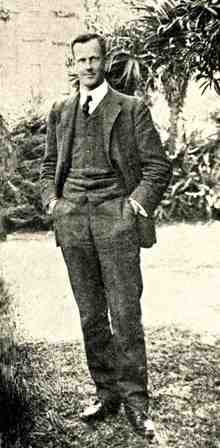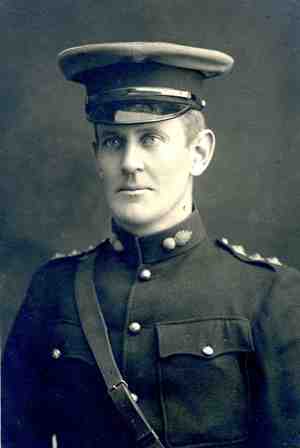MORRISON, CHARLES NORMAN (1866-1909)See Also
MORRISON, CHARLES NORMAN (Centenary History Text, 1961) 
Charles Norman Morrison.
Geelong College Principal, Norman Morrison, was born at the old College house, Skene Street, Geelong, on 4 December 1866. His father was
George Morrison (afterwards Dr George Morrison MA), the founder of Geelong College, a native of Morayshire, Scotland, and one of a family of brothers who distinguished themselves in various professions. His mother was
Rebecca nee Greenwood. She belonged to a prominent Yorkshire mill owning family.

Charles Norman Morrison.
When Norman Morrison was five years old, the new College buildings were erected in Newtown, and thither the Principal and his family removed. Norman's name was entered on the school roll at an early age, and he remained a pupil until the end of 1883. A strong sportsman, he was a member of the 1st Football Team of 1882-4 and the 1st Cricket Team in 1883 1nd 1884. In 1884, he began attending classes at the University of Melbourne, and in 1885 took up residence in Ormond College. While there he was under the tuition of the Master, Dr J H Macfarland, and of the Classical Tutor, Mr E I Robson, MA, and as the days went on the discipleship was transformed into friendship for these two teachers. In 1887, he obtained the degree of Bachelor, and two years later that of Master of Arts. He specialised in Classics and Philology, and gained Honours in this 'School'.
He then accepted an appointment as Assistant-master at Brighton Grammar School under Dr G Crowther. He was always appreciative of the thorough training in school he received at the hand of so capable a Head Master. He paid visits to several State schools, notably Mr. Sargent's school, in Carlton, that he might get an insight into the best methods of the Education Department.
In 1890, he was commissioned in the colonial military forces, later transferring to the Geelong Battery, Militia Garrison Artillery in 1892 where he became captain in 1884. He became a member of the teaching staff at his father's school, Geelong College, at the beginning of 1891, and was successively Assistant, Vice-Principal, and Principal during a term of nineteen years. During this period he toured Europe in 1894-5. A student and later staff member, and co-author of the College's 'Centenary History',
'Bert' Keith, described him as
'a benevolent despot, exercising strict discipline and making or unmaking rules at will' .
On 12 November 1909, Morrison, apparently, shot himself while climbing through a fence at his Mount Moriac property, 'Ardoch'. After an extensive funeral service on Tuesday 16 November, he was buried at Geelong Western Cemetery. He is memorialized in the naming of
Norman Morrison Memorial Hall, a portrait by G R Mainwaring, and a bronze bust by Paul Montford. The portrait was donated by Mr Desmond Gaunt in 1967 and had originally been commissioned for his mother, Mrs Clive Gaunt,
(Evelyn Hilda nee Morrison). All Saints Church, next to the College, includes a Norman Morrison Memorial Bell.
His legacy at the School was profound. During his period as Principal he had modernized the Curriculum and the School - building Chemistry and Physics Laboratories, a Sports pavilion and Oval, and championing the College Cadet Corps. His most significant act was to sell the School back to the Presbyterian Church in 1908, in a move that was to ensure participation in the Associated Public Schools (APS) Competition.
Sources: Pegasus December 1909; B R. Keith, also published in: 'Morrison, George (1830 - 1898)', Australian Dictionary of Biography, Volume 5, Melbourne University Press, 1974, p. 298; Ad Astra September 1966 p1; Ad Astra April 1967 p3; Ad Astra September 1967 p2.